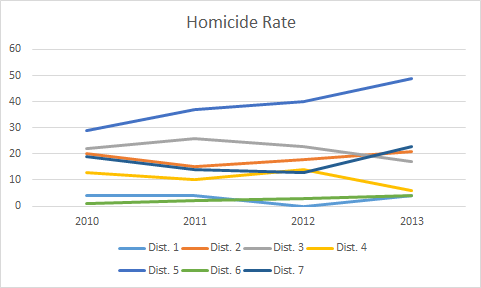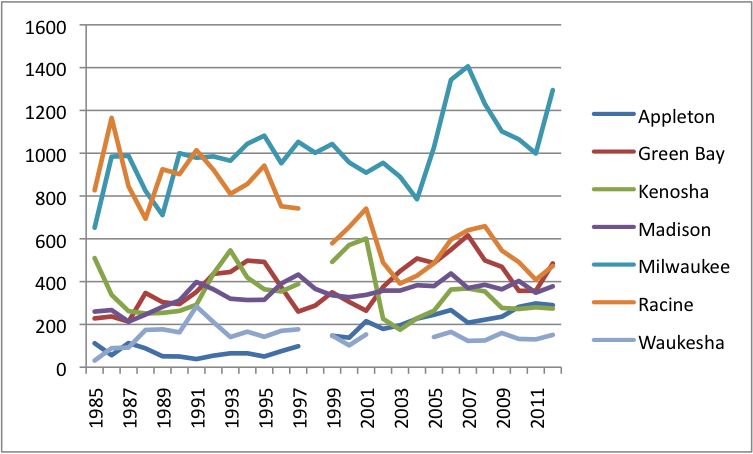Violence in the Heartland, Part VI: Cities Within the City
My most recent posts in this series have compared violent crime data from different cities. However, focusing on a single crime-rate number from a city may mask wide neighborhood-to-neighborhood variations within the city.
Consider Milwaukee. A helpful on-line data tool permits interesting comparisons among the city’s seven police districts. The data reveal that rates of violent crime vary within the city by about as much as they do across cities. Here, for instance, are the homicides per 100,000 district residents since 2010:
District 5, encompassing the north-central portion of the city, has easily had the highest homicide rate each year, while Districts 1 (downtown and northeast) and 6 (far south) have easily had the lowest. (District boundaries are described in more detail here.)
Robbery rates reflect a similar pattern:


